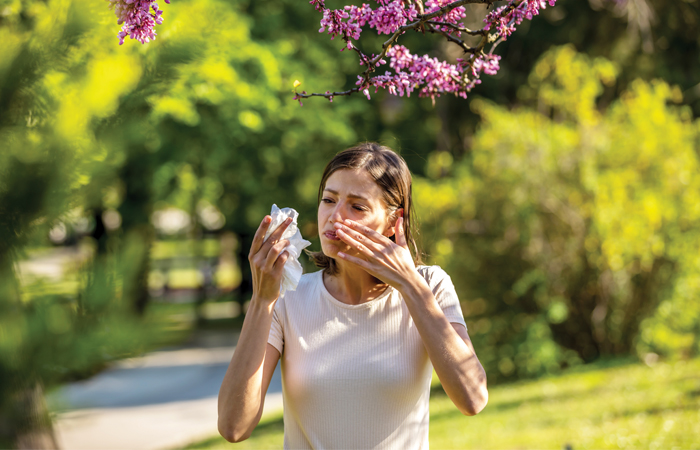Understanding the problem
One in five people in the UK suffer from hayfever, and it is estimated that numbers will soar to 31.8 million by 2030. The rise is being linked to air pollution and the effect of climate change, as increases in environmental temperature can lead to more pollen-bearing plants and the hayfever season starting earlier.
In June 2024, the number of hayfever sufferers searching the NHS website for advice more than doubled. In a week, it averaged 11,736 visits a day compared to a daily average of 4,749 visits – an increase of 147 per cent – equivalent to one visit every six seconds.
Pollen levels, often referred to as the pollen count, vary with the time of year and weather. In general:
Tree pollen (e.g. birch) is released during spring. However, trees such as hazel and yew may cause symptoms as early as February, while oak pollen may persist into June.
Grass pollen is released at the end of spring and the beginning of summer and affects around 90 per cent of hayfever sufferers
Weed pollen, such as nettle, is released from early spring through to late autumn.
Fast facts
- The pollen season can start as early as March and end as late as September
- Hayfever affects one in five people in the UK
- There are around 30 types of pollen that can cause hayfever
- People are more likely to develop hayfever if they have a family history of allergies, particularly asthma or eczema
- Hayfever is more common in boys than girls, but affects adult men and women equally. Some 10-15 per cent of children and 26 per cent of adults in the UK are affected
- Many people find their symptoms improve as they get older, with symptoms disappearing completely in around 10-20 per cent of people
- There is currently no cure for hayfever, but most people are able to relieve their symptoms, at least to a certain extent, with treatments and self care measures
- Without treatment, hayfever can lead to complications such as asthma, sinusitis and middle ear infections, as well as having a serious impact on quality of life.

